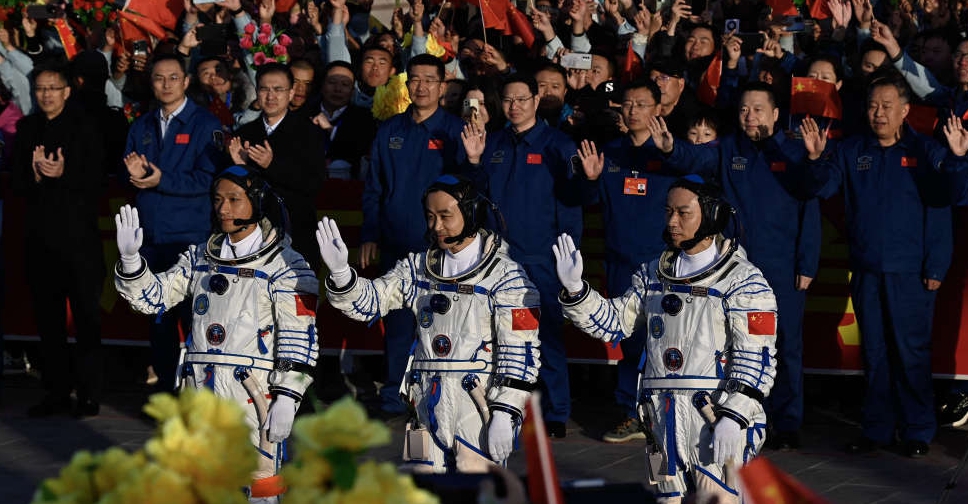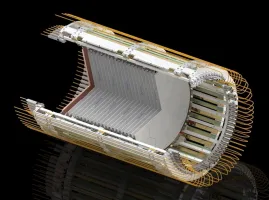Blog Credit: Trupti Thakur
Image Courtesy: Google
China’s Youngest Space Crew
China’s space endeavors are reaching new heights, evident in the recent launch of Shenzhou 17 from the Jiuquan Satellite Launch Center. This mission highlights China’s determination to explore outer space, fueled by a competitive spirit with the United States.
Crew Details
- The Shenzhou 17crew comprises Tang Hongbo, Tang Shengjie, and Jiang Xinlin, with an average age of 38, making it the youngest team on a space station construction mission.
- Tang Hongbo, a seasoned astronaut, previously led a 2021space mission for three months.
Mission Objectives
- The crew’s primary tasks include conducting experiments in space medicine and technology.They will also install and maintain equipment both inside and outside the station.
- Moreover, China plans to send a new telescope into space, allowing in-depth exploration of the universe through surveys and sky mapping, although the installation timeframe remains undisclosed.
China’s Space Advancements
- Chinahas been excluded from the International Space Station, leading the country to construct its own space station.
- Despite challenges, China has made significant progress in space exploration. It achieved the milestone of sending its first astronaut into space in2003, making it the third country to do so independently.
- China has also made strides in lunar exploration, bringing back samples from the moon’s surface and landing a rover on the far side of the moon.
Global Space Race
- China’s endeavors reflect the ongoing competition with the United States in various fields, including technology, military, and diplomacy.
- Both nations have plans for lunar missions and have landed rovers on Mars.The United States, with the support of private sector companies like SpaceX and Blue Origin, aims to put astronauts back on the moon by 2025.
Leading the six-month mission was former air force pilot Tang Hongbo, 48, who was on the first crewed mission to the space station in 2021.
The youngest-ever crew of Chinese astronauts departed for China’s space station on Thursday, paving the way for a new generation of “taikonauts” to advance the country’s space ambitions in the future.
The spacecraft Shenzhou-17, or “Divine Vessel”, and its three passengers lifted off atop a Long March-2F rocket from the Jiuquan Satellite Launch Centre in northwest China.
We’re now on WhatsApp.
Leading the six-month mission was former air force pilot Tang Hongbo, 48, who was on the first crewed mission to the space station in 2021.
His return to the orbiting outpost Tiangong, or “Celestial Palace” in Chinese, also set a new record for the shortest interval between two spaceflight missions by taikonauts – coined from the Chinese word for space – suggesting a faster rotation of taikonauts in coming years.
Tang, from China’s second batch of astronauts in 2010, had to wait more than a decade before he was picked for his inaugural spaceflight in 2021.
‘Space dream’
Plans for China’s “space dream” have been put into overdrive under President Xi Jinping.
The world’s second-largest economy has pumped billions of dollars into its military-run space program in an effort to catch up with the United States and Russia.
In June, the return capsule of the Shenzhou-15 spaceship touched down at a landing site in the northern Inner Mongolia region, with state media hailing the mission as a “complete success”.
That month also saw the launch of the Shenzhou-16 capsule, which carried the first Chinese civilian—Beihang University professor Gui Haichao—into orbit.
That crew will return to Earth on October 31 after completing a handover, officials said Wednesday.
Beijing also aims to send a crewed mission to the moon by 2030 and plans to build a base on the lunar surface.
Spokesperson Lin reiterated that aim Wednesday, saying that the “goal of landing Chinese people on the moon by 2030 will be realized as scheduled”.
Lunar plans
The country’s lunar plans were dealt a setback in 2017 when the powerful Long March-5 Y2 rocket failed to launch on a mission to put communication satellites into orbit.
That forced the postponement of the Chang’e-5 launch, originally scheduled to collect moon samples in the second half of 2017.
Another robot, the Chang’e-4, landed on the far side of the moon in January 2019—a historic first.
Chang’e-5 eventually landed on the moon in 2020, raising a Chinese flag on the lunar surface and returning to Earth the first lunar samples in four decades.
And the final module of the T-shaped Tiangong—which means “heavenly palace”—successfully docked with the core structure last year.
The station carries several pieces of cutting-edge scientific equipment, according to state news agency Xinhua, including “the world’s first space-based cold atomic clock system”.
The Tiangong is expected to remain in low Earth orbit at between 400 and 450 kilometers (250 and 280 miles) above the planet for at least 10 years.
Blog By: Trupti Thakur

30
OctThe Youngest Space Crew
Oct 30, 2023Recent Blog
India’s Steps Into 6GMay 15, 2025
The New Accessibility Feature of AppleMay 14, 2025
The Digital Threat Report 2024May 13, 2025
The MADMAX ExperimentMay 12, 2025
The EntraID Data ProtectionMay 10, 2025




